Cannabis plants’ roots are incredibly important when it comes to developing and growing properly; the roots are where they’ll absorb most of their nutrients from. A cannabis plant with small or little roots won’t be able to grow large and strong, however a plant with a decent root system will be able to grow into a large, high-yielding plant.
You should always make sure that your plants grow their own healthy root system from the very start up until the end. You can use root stimulants like Bio Rhizotonic by Canna or Rootbastic by Atami once you’ve planted your germinated seeds in order to give them a push in the right direction and an increase in growth speed. We highly recommend using rooting products during transplants too, such as Mycorrhizae and Trichoderma in order to protect and improve root growth (when growing organically).
What is a Transplant?
Transplanting is essentially relocating a plant into new substrate or a new container larger than the last one or straight to the ground in order to increase and improve root growth.
Roots need darkness, humidity, and oxygen. They don’t like direct light because they end up burning, nor do they like continuous oxygen and air because they can dehydrate. During the transplanting process you’ll need to keep these factors in mind in order to avoid stressing your plant out as much as possible; transplanting always causes a certain amount of stress.
Using a good substrate when transplanting is incredibly important when it comes to root growth. You’ll need to use an airy, clean substrate; substrates come in different NPK concentrations, especially those designed for cannabis. You’ll need to choose the one that best fits with your growing method or cannabis strain.
The shape that your plants roots grow into will be mirrored by the top half of the plant once they begin to grow. If your plants’ root system is deep and thin, your plants will grow taller and skinnier. However, if they have a short but wide root system, the resulting plant will grow out thick and short. It’s important to choose the right flowerpots when growing cannabis. The general structure of your plant will also depend on the strain grown.
When to Transplant Cannabis Plants
The type of strain you plant on growing will determine if you need to transplant or not, and the best time to do so.
Photoperiodic cannabis plants
Photoperiodic cannabis plants are those which stay in the growth period as long as they get a constant light cycle of 18h light / 6h dark. In indoor grows you can flip to the flowering period (switching the light schedule to 12/12h) once your plants have grown to be adults and have reached your desired size.
- We highly recommend planting the germinated seed in a small flowerpot (0.4L) because cannabis plants need small cycles of moisture and drought in order to grow at the correct speed. This can’t be done if you use a large flowerpot because the small roots won’t be able to absorb all of the water in the substrate.
- You should transplant when the roots have taken over all of the substrate. This is made obvious when your plants slow their growth. One of the main factors that indicate you should transplant urgently is leaf dropping, plant yellowing or the appearance of nutrient blockage or deficiencies. We don’t recommend letting it get this far; keep an eye on your plants when they’re small and transplant before it becomes a problems.
You can transplant as many times as your plant needs before they begin to flower. Indoor growers usually transplant once or twice, and outdoor growers can transplant from 2 to 4 times; plants grow for much longer outdoors because you can’t control their light schedule.
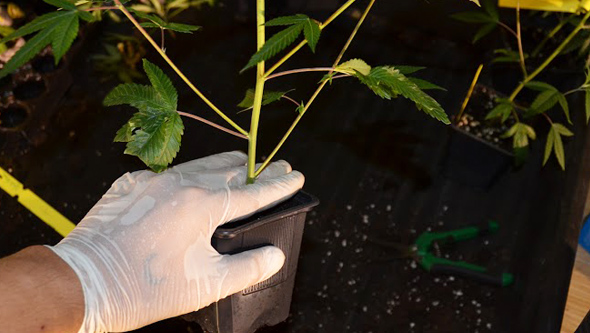
Autoflowering Cannabis Plants
Autoflowering cannabis plants have a short growing period and they begin to flower regardless of the amount of light they receive, because they’re not photoperiodic. Due to their limited growth, we recommend planting the germinated seeds directly into their final flowerpot, as any transplants will stunt their growth.
How to Transplant Cannabis
You’ll need to be extremely cautions when it comes to transplanting cannabis plants, as it’s quite a stressful time for them. The better the transplant, the less time your plants will take to recover and growing again.
Necessary material
- Flowerpots to transplant into. We highly recommend cleaning them before using them in order to avoid pathogens and illness in the roots and, therefore, the plant.
- Latex gloves in order to avoid infecting the plant with anything.
- Root stimulant in order to increase root growth and decrease the stress caused during the process.
- Mycorrhizae and Trichoderma are beneficial fungi used to improve root growth and protect root systems. Only use these products in organic grows, as mineral products may affect them negatively.
Pre-transplant prep
- Don’t water a couple of days before transplanting. If the substrate is slightly dry it will be more compact and easier to move with the root ball. Be careful during this process; do not let it dry out too much or you may dehydrate your plant.
- Prepare a comfortable area with enough space to work; bad posture during transplanting can cause back issues.
- Place the flowerpot with the plant in it in your new container in order to get an idea of how much substrate to use.
- Fill your new flowerpot up with enough substrate to transplant without having the old root ball come up over the new one.
Removing the root ball
- Make a hole with your hand for the root ball.
- Sprinkle mycorrhizae and trichoderma in the hole so that they come into contact with the roots.
- Place the stem of the plant between your ring and middle finger – this will help you to keep the root ball steady without needing to touch the roots.
- Turn the flowerpot around with the plant in it and press the bottom of it in order to separate it from the substrate and remove it. It may take a bit of effort, you can softly hit the bottom of the flowerpot instead of pulling on the stem; if the plant is young you can easily break it this way.
- Place the root ball in the hole you’ve made using new substrate.
- Fill the leftover space with more substrate; don’t compact it too much so that the roots still have access to oxygen and can grow easily.
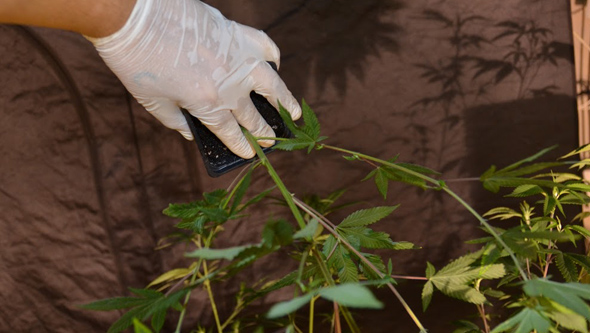
Watering after transplant
- Prepare your water using your preferred root stimulant.
- Adjust the pH in your solution between 6.2 and 6.5; the right pH level makes it much easier for your plants to absorb nutrients and root stimulant from the substrate.
- Water slowly until you see some water come out of the bottom of the flowerpot.
- Let your plants rest and recover from the stress caused by this process. Raise your lights, don’t place fans directed at your plants, and wait until the substrate dries out a little before watering again.
- If you transplant to coco coir, remember that this substrate is inert and doesn’t contain any nutrients, so you’ll have to add some growth nutrients to your water (or the nutrients planned for that particular stage).
Recommended flowerpot size
Indoor grows
- 1st flowerpot (0.2 – 0.4L) for planting your germinated seed; leave your plant here for 7 – 10 days at least before transplanting again.
- 2nd flowerpot for growth (2 to 3.5L). Up to 1 week before lipping the lights.
- 3rd definitive flowerpot (6 – 11L or more if you have a few plants).
*The amount of time your plants should be in each flowerpot have been calculated assuming the erfect humidity, temperature, and feeding conditions.
Outdoor grows
- 1st flowerpot (0.2 – 0.4L) for planting your germinated seed.
- 2nd flowerpot for growth; you’ll need to transplant more than once before using your final flowerpot because outdoor plants have a much longer growth period. You’ll need to increase the size of the flowerpots little by little.
- 3rd flowerpot; this is the final flowerpot. You’ll need to keep in mind that the larger the container for your roots, the larger your plants will be able to grow; if they get enough space (over 50L), your plants will grow as if they were in a field, growing various meters tall and producing various kilos of flowers.
Growing in the ground
- 1st flowerpot (0.3 – 0.4L), plant your germinated seed or rooted clone; leave it here for 7 – 10 days before transplanting again.
- 2nd flowerpot for growing (2 – 3.5L), ideal for your plant to begin growing stronger for when it’s eventually planted in the ground outdoors.
- Transplant to ground; make a large, deep hole in the ground. Fill the hole up with high quality substrate such as ProfiCanna 150L or Light Mix 50L so that your plants’ roots can grow properly.
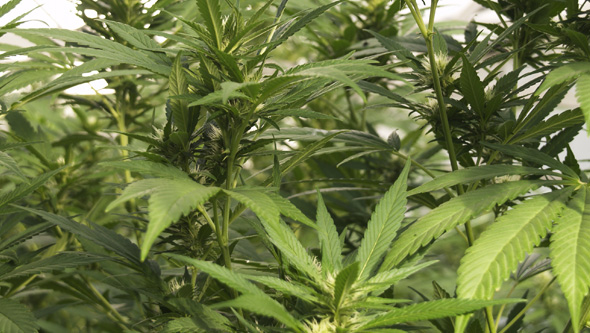
Advice
- When it comes to indoor growing, the size of your flowerpot is determined by the general growing area. For example, you can grow 9 plants in one square meter using 7L flowerpots, or you can grow 6 plants in 11L flowerpots, covering the same space.
- In outdoor grows we recommend using white flowerpots, which don’t absorb as much sun as black flowerpots, or the revolutionary Smart Pots, which allow for a more aired out substrate and root growth.
- Don’t leave your plants out of their flowerpots in the light for too long; transplant them one by one in order to avoid this issue.
- Don’t moisten the substrate too much after transplanting; your plants’ roots don’t have much oxygen at this stage, and this could cause bad reactions which can end up generating toxic residues.
- Don’t let it dry out too much either, or your plants’ roots will become damaged, and their growth will slow down.
- Never transplant after the start of the flowering period; all this will do is stress your plant out even more. We recommend transplanting for the last time about a week before the flowering period starts.
- Use flowerpots proportionate to the size of your plants, increasing their size as your plants grow. This allows the substrate to dry out faster and your plants’ roots will have to grow more in search of moisture. If the flowerpot isn’t the right size, it can easily become soaked which can cause secondary roots to grow much less.
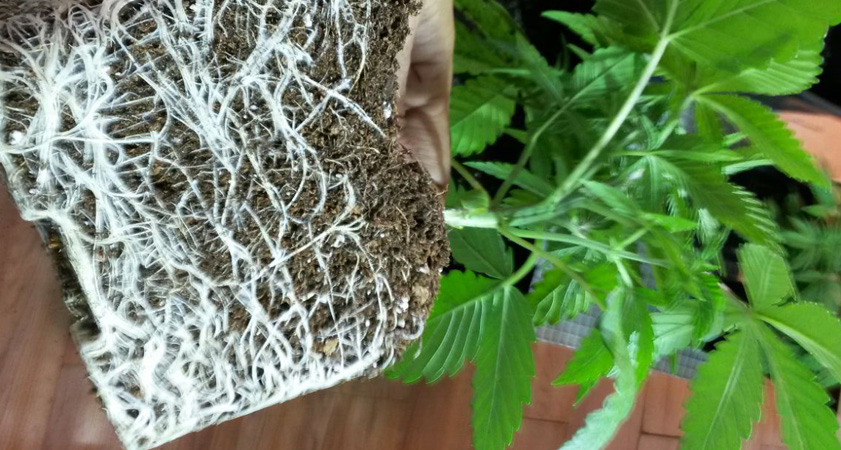


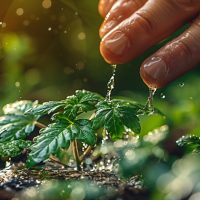
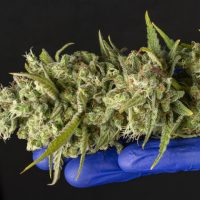
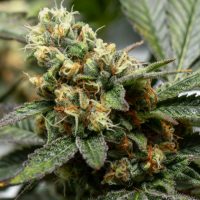

2 responses
Great Article! Thank you for sharing this is very informative post, and looking forward to the latest one.
Hello,
¡Thanks! Making the most great comunity.
Regards,